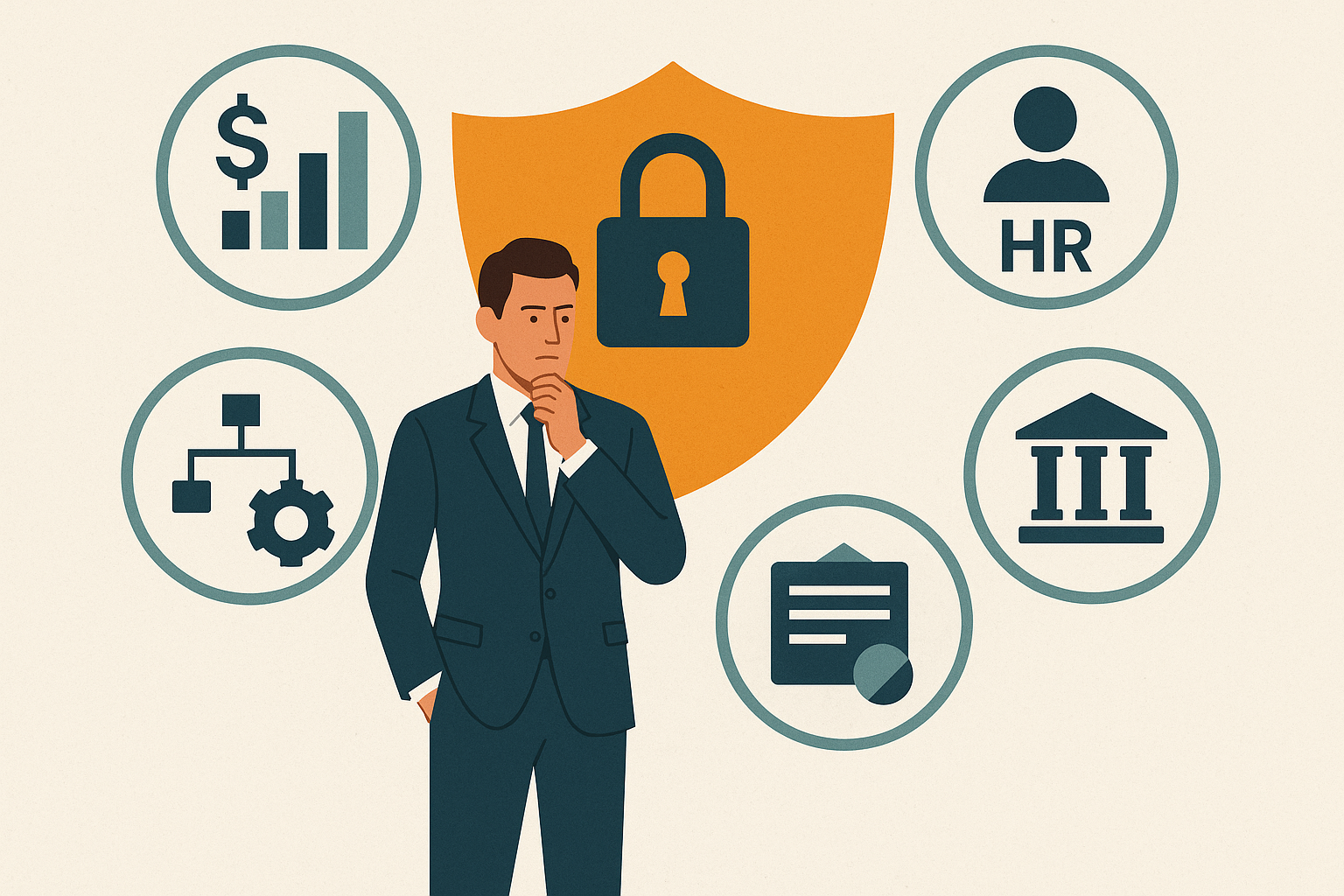Cybersecurity Isn’t Just an IT Problem. It’s a Business Risk in the Age of AI
When many business leaders hear "cybersecurity," they still think of firewalls, antivirus software, and the person in IT who resets their password. But today, cybersecurity is far more than an IT function. It’s a critical business risk, one that affects operational continuity, financial security, brand reputation, and legal exposure.
And in 2025, that risk is accelerating thanks to the widespread use of AI tools—by both defenders and attackers.
Treating cybersecurity like a side task for the IT department is no longer enough.
A Breach Doesn’t Just Hit Systems. It Hits the Entire Business
In a cyber incident, it’s not just servers that suffer. The consequences ripple through every team:
-
Finance faces fraud, wire transfer scams, and costly ransomware payouts.
-
HR may be dealing with identity theft and employee data exposures.
-
Marketing and Leadership are forced to manage reputation damage and public response.
-
Operations lose productivity, access, and customer trust during critical downtime.
These are not theoretical risks. IBM’s most recent data breach report found that the average cost of a breach for small and mid-sized businesses is $3.31 million. And that number continues to grow—especially for companies that lack clear detection and response capabilities.
Cyber Threats Are Now Business Threats—
Supercharged by AI
Today’s attackers aren’t just lone hackers or ransomware gangs. They’re using AI-assisted tools to craft more convincing phishing emails, automate vulnerability scans, and extract data at massive scale.
They’re targeting:
-
Billing systems to hijack payments
-
Cloud storage platforms to steal contracts and intellectual property
-
Business email accounts to launch invoice fraud and impersonation attacks
-
AI chat logs and usage data to access sensitive internal information employees unknowingly share with tools like ChatGPT and Copilot
The same AI that helps your business grow is now being weaponized by cybercriminals—making real-time security monitoring and company-wide awareness more important than ever.
Why the “IT Will Handle It” Approach No Longer
Works
Most internal IT teams are already stretched thin managing:
-
Device onboarding and troubleshooting
-
Software licensing and updates
-
User access, help desk tickets, and cloud services
-
Basic security tools like firewalls and antivirus
But they are not equipped—or expected—to provide 24/7 threat detection, AI policy enforcement, or advanced incident response. And even if they could, security is not just technical anymore. It involves people, processes, and business context.
Too many companies falsely assume they’re “too small to be targeted,” or that a lack of incidents means they’re secure. In reality, many are already compromised and simply unaware.
Cybersecurity Is a Business Priority in an AI-
Powered World
Attackers are evolving—and so must your business. With AI rapidly changing the threat landscape, organizations can no longer treat cybersecurity as a background IT issue.
Security today is about protecting data, maintaining customer trust, and ensuring business continuity in the face of dynamic threats. That means making cybersecurity part of your company’s core operating model.
The question is no longer if your business will be targeted. It’s whether you’re prepared when it is.

